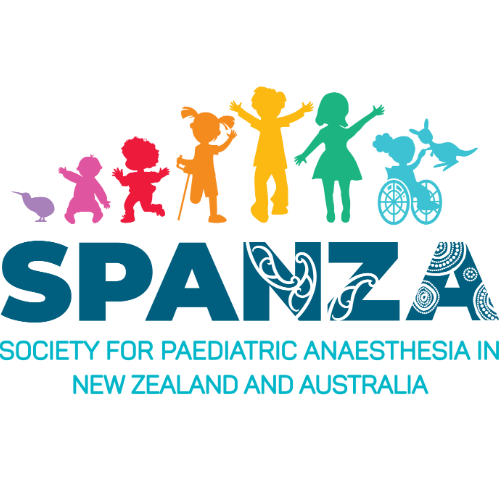
Activity: Team training scenario within own work environment, with usual work team Practice evaluation - Reviewing performance
Guide index
 Library > Library guides > Professional development hub > ANZCA and FPM CPD Program
Library > Library guides > Professional development hub > ANZCA and FPM CPD Program
 Category 1: Practice evaluation
Category 1: Practice evaluation
 Category 2: Knowledge & skills
Category 2: Knowledge & skills








 Advances in Patient Safety: New Directions and Alternative Approaches (Vol. 3: Performance and Tools)- TeamSTEPPS™: Team Strategies and Tools to Enhance Performance and Patient Safety
by
Team Strategies and Tools to Enhance Performance and Patient Safety (TeamSTEPPS™) is a systematic approach developed by the Department of Defense (DoD) and the Agency for Healthcare Research and Quality (AHRQ) to integrate teamwork into practice. It is designed to improve the quality, safety, and the efficiency of health care. TeamSTEPPS is based on 25 years of research related to teamwork, team training, and culture change. As a direct outcome of the 1999 Institute of Medicine (IOM) report, To Err is Human, TeamSTEPPS introduces tools and strategies to improve team performance in health care. This article describes the evolution of the TeamSTEPPS program and its research foundation, development, and implementation. To date, the DoD has taught TeamSTEPPS at over 68 facilities, creating approximately 1,500 trainers/coaches, who have trained over 5,000 staff members. Beginning with the public release of TeamSTEPPS resources in November 2006, AHRQ began its effort to disseminate TeamSTEPPS nationwide. To support this plan, a national infrastructure is being established for long-term sustainment through collaborative efforts of several Federal agencies, academic centers, and health care networks, aiming for wide-scale dissemination.
Advances in Patient Safety: New Directions and Alternative Approaches (Vol. 3: Performance and Tools)- TeamSTEPPS™: Team Strategies and Tools to Enhance Performance and Patient Safety
by
Team Strategies and Tools to Enhance Performance and Patient Safety (TeamSTEPPS™) is a systematic approach developed by the Department of Defense (DoD) and the Agency for Healthcare Research and Quality (AHRQ) to integrate teamwork into practice. It is designed to improve the quality, safety, and the efficiency of health care. TeamSTEPPS is based on 25 years of research related to teamwork, team training, and culture change. As a direct outcome of the 1999 Institute of Medicine (IOM) report, To Err is Human, TeamSTEPPS introduces tools and strategies to improve team performance in health care. This article describes the evolution of the TeamSTEPPS program and its research foundation, development, and implementation. To date, the DoD has taught TeamSTEPPS at over 68 facilities, creating approximately 1,500 trainers/coaches, who have trained over 5,000 staff members. Beginning with the public release of TeamSTEPPS resources in November 2006, AHRQ began its effort to disseminate TeamSTEPPS nationwide. To support this plan, a national infrastructure is being established for long-term sustainment through collaborative efforts of several Federal agencies, academic centers, and health care networks, aiming for wide-scale dissemination.
 Designing a Simulation Scenario
by
Introduction
A simulation scenario is an artificial representation of a real-world event to achieve educational goals through experiential learning. Designing an effective simulation scenario requires careful planning and can be broken into several steps. Simulation scenarios are designed to assess, educate, and help learners to self-identify gaps in their understanding of material or application of knowledge. Simulation may also address patient safety issues, clinical cases, teamwork opportunities, communication challenges, procedural competencies, and leadership skills. Designing an effective scenario requires planning, including knowledge of the target learners, goals and objectives, intended outcomes, and context. Knowledge of educational principles, including Bloom's Taxonomy, which describes the progression from novice to expert, helps develop educational goals. Scenario design must also consider the level of fidelity, use of props, moulage, embedded participants, simulators, and standardized patients.[1] All simulation scenarios should address a perceived knowledge or performance gap. The finished scenario should take place in a safe and non-judgemental setting.
Designing a Simulation Scenario
by
Introduction
A simulation scenario is an artificial representation of a real-world event to achieve educational goals through experiential learning. Designing an effective simulation scenario requires careful planning and can be broken into several steps. Simulation scenarios are designed to assess, educate, and help learners to self-identify gaps in their understanding of material or application of knowledge. Simulation may also address patient safety issues, clinical cases, teamwork opportunities, communication challenges, procedural competencies, and leadership skills. Designing an effective scenario requires planning, including knowledge of the target learners, goals and objectives, intended outcomes, and context. Knowledge of educational principles, including Bloom's Taxonomy, which describes the progression from novice to expert, helps develop educational goals. Scenario design must also consider the level of fidelity, use of props, moulage, embedded participants, simulators, and standardized patients.[1] All simulation scenarios should address a perceived knowledge or performance gap. The finished scenario should take place in a safe and non-judgemental setting.
 Scenarios for Success in Patient Communication: A Training Guide for Healthcare Professionals
by
These health scenarios are intended for health literacy education. The scenarios are real; however, the names and photos used are not those of actual patients.
Scenarios for Success in Patient Communication: A Training Guide for Healthcare Professionals
by
These health scenarios are intended for health literacy education. The scenarios are real; however, the names and photos used are not those of actual patients.
 TeamSTEPPS Implementation of a teamwork programme into an Australian Setting Public Report on Pilot Study
by
TeamSTEPPSTM is an evidence-based teamwork training system developed by the US Department of Defense Patient Safety Programme in collaboration with the Agency for Healthcare Research and Quality (AHRQ). It has four teamwork competencies comprising of leadership, situation monitoring, mutual support and communication that characterise effective communication and teamwork. The objectives of the project in South Australia were to implement TeamSTEPPSTM in five sites and to evaluate the content and process for its validity in handover in the Australian context. The evaluation concluded that the TeamSTEPPSTM programme is applicable, relevant and adaptable to the Australian health care context. The sites embraced the TeamSTEPPSTM philosophy of improving teamwork, communication and patient safety through structured communication techniques. Implementation generally was observed to have occurred systematically and in collaboration with multi-disciplinary team members. Process changes included improved quality of communication, handover, teamwork and relationships. The structural changes included the introduction of patient whiteboards, the restructuring of clinical loads, clear and visible team roles and responsibilities, and the introduction of patient charts to facilitate handover. Outcome changes included time and resource efficiencies and opportunities for improved coordination of clinical care. Communication and teamwork supports clinical activity, is part of delivering daily care, and provides a safety net for patients. TeamSTEPPSTM therefore should not be seen in isolation as a quality improvement activity and its system-wide benefit would be realised through its integration into existing programmes and processes.
TeamSTEPPS Implementation of a teamwork programme into an Australian Setting Public Report on Pilot Study
by
TeamSTEPPSTM is an evidence-based teamwork training system developed by the US Department of Defense Patient Safety Programme in collaboration with the Agency for Healthcare Research and Quality (AHRQ). It has four teamwork competencies comprising of leadership, situation monitoring, mutual support and communication that characterise effective communication and teamwork. The objectives of the project in South Australia were to implement TeamSTEPPSTM in five sites and to evaluate the content and process for its validity in handover in the Australian context. The evaluation concluded that the TeamSTEPPSTM programme is applicable, relevant and adaptable to the Australian health care context. The sites embraced the TeamSTEPPSTM philosophy of improving teamwork, communication and patient safety through structured communication techniques. Implementation generally was observed to have occurred systematically and in collaboration with multi-disciplinary team members. Process changes included improved quality of communication, handover, teamwork and relationships. The structural changes included the introduction of patient whiteboards, the restructuring of clinical loads, clear and visible team roles and responsibilities, and the introduction of patient charts to facilitate handover. Outcome changes included time and resource efficiencies and opportunities for improved coordination of clinical care. Communication and teamwork supports clinical activity, is part of delivering daily care, and provides a safety net for patients. TeamSTEPPSTM therefore should not be seen in isolation as a quality improvement activity and its system-wide benefit would be realised through its integration into existing programmes and processes.
Practice evaluation: COVID-19 - 30 min LSCS DRILL
 This template, provided by the Royal Hospital for Women, NSW, outlines team members roles and stages of care for a 30-minute emergency caesarean section multidisciplinary team drill. Permission is granted by the authors to modify to reflect local practice. If conducted according to CPD requirements, this activity may qualify for CPD value under the Team training scenario within own work environment, with usual work team activity category.
This template, provided by the Royal Hospital for Women, NSW, outlines team members roles and stages of care for a 30-minute emergency caesarean section multidisciplinary team drill. Permission is granted by the authors to modify to reflect local practice. If conducted according to CPD requirements, this activity may qualify for CPD value under the Team training scenario within own work environment, with usual work team activity category.





Quick links
About ANZCA
Copyright © Australian and New Zealand College of Anaesthetists.